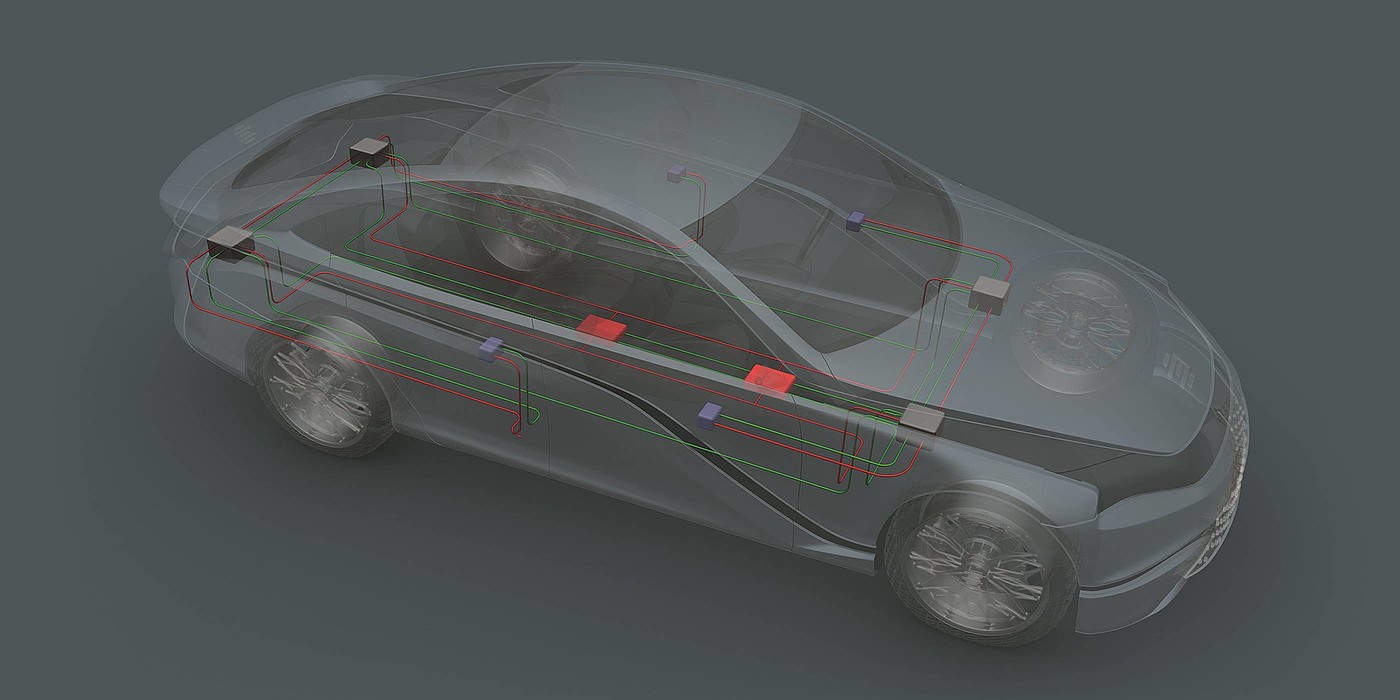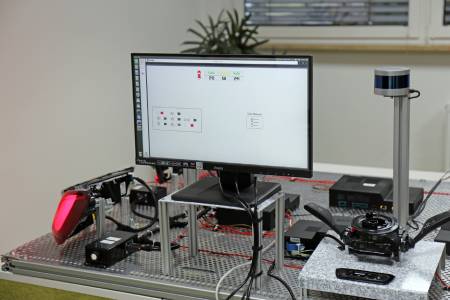The EDAG Group develops zone-based, service-oriented electric/electronic architectures as platforms for future mobility concepts.
eMobility, autonomous driving, connectivity and user experience are megatrends in the mobility sector. These call for a large number of sensors, actuators and cameras in the vehicle. There is therefore a significant increase in the resulting volume of data needing to be transmitted and processed. This is because the vehicle, like a "smartphone on wheels", communicates constantly – both with the occupants and with its surroundings. The new features cannot be fully integrated into the vehicle with today's E/E architectures. For this reason, the EDAG Group, the world's largest independent engineering service provider to the mobility industry, has developed a concept for a zone-based, service-oriented E/E architecture in the course of the funded project "ZOBAS". The project was funded by the Federal Ministry for Economic Affairs and Climate Action. The project sponsor is TÜV Rheinland Consulting GmbH.
Service-oriented E/E architectures are widely used in the IT world, one example being a central printer that can be contacted by several workstations, which it then serves. More and more, technology is also finding its way into the automotive environment, with functions being centralized and put to multiple use. An example of this is the outside temperature sensor. This provides the temperature value, which in turn can be used by several applications, for instance the air conditioning or the temperature indicator in the center console display. With the aim of developing a zone-oriented E/E architecture that would be suitable for all mobility concepts, EDAG Engineering GmbH and Technica Engineering GmbH joined forces, and in 2020 commenced work on "ZOBAS", a funded project.
The completed project results are now to be presented to the public for the first time at the ELIV MarketPlace congress, Nov. 15-16. As well as developing a new E/E architecture for vehicles, the project partners also aimed to reduce the number of control units in a vehicle. Depending on the range of functions, many separate control units are installed in today's vehicles, and the specific sensors/actuators are connected to these. This means that up to 100 control units need to be fitted into the vehicle. In a zone-oriented E/E architecture, the sensors/actuators are connected to the nearest zone controller. In the "ZOBAS" project, it proved possible to significantly reduce the number of control units, depending on the vehicle's equipment. This also significantly reduces the complexity of the wiring harness variants required.
Gerhard Becker, "ZOBAS" project leader, describes the EDAG Group's project volumes: "We dealt with the development of the entire E/E architecture and with the integration of Technica Engineering GmbH's central computer/zone controller. The result is an E/E architecture in which the weight of the wiring harness has been reduced by about 30 percent. An additional advantage of the innovative E/E architecture is the reduction of individual wiring harnesses functioning as point-to-point connections. In the future this will enable wiring harnesses - no more than 2.5 meters long - to be automatically manufactured and installed in the vehicle. Their production can therefore be relocated to be close to production sites - a major competitive advantage for both vehicle manufacturers and suppliers." In addition to the update ever the air features, vehicle diagnostics can also be carried out from anywhere in the future.
The new type of application development allows third-party providers to supply their services or apps in a kind of app store for vehicles. Due to the high data volume and real time requirements involved, Automotive Ethernet is used for the communication between the control units. "We successfully completed the project in the middle of this year. Among other things, we offer the know-how we have acquired to our customers in the course of projects and also offer support in the form of individual training courses. Because only by working together can we meet the growing demands for functions such as on-demand features and updates over the air in future vehicles. The basic framework for this are zone-based, service-oriented E/E architectures," says Becker.
The results of "ZOBAS" are to be further explored in a subsequent research project. The focus will be on the inclusion of artificial intelligence in the development of zone-based, service-oriented E/E architectures.
Images: ZOBAS – a concept solution for scalable E/E architectures for future mobility concepts. Photo: EDAG Group


